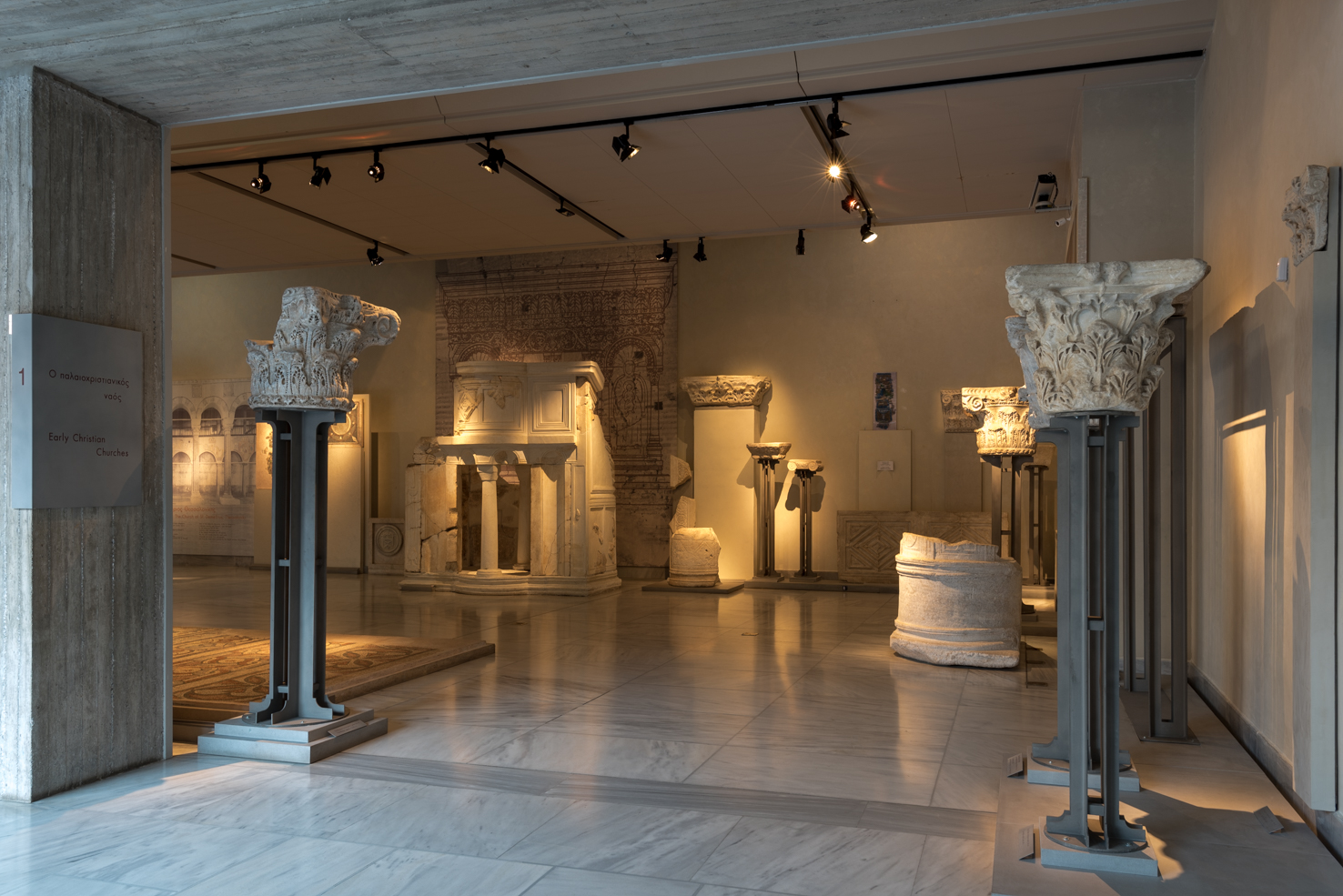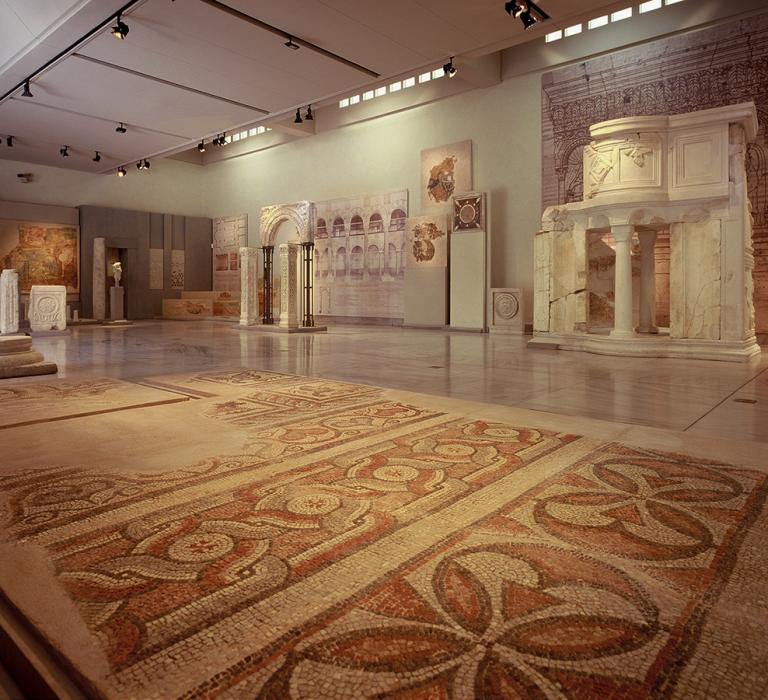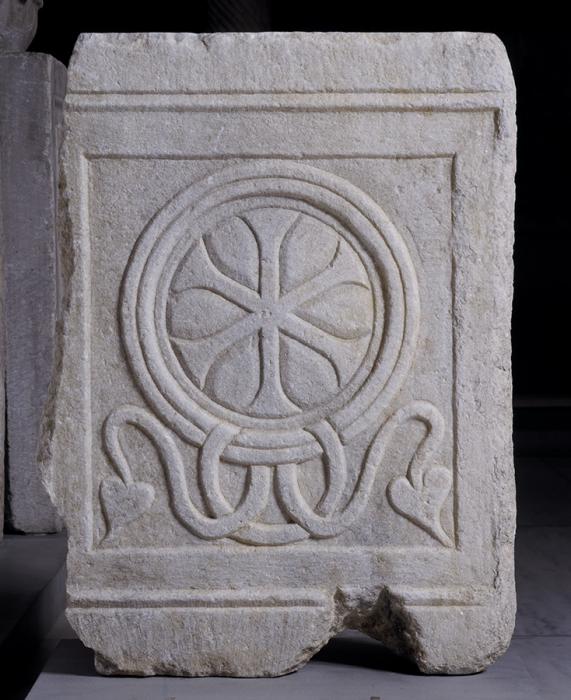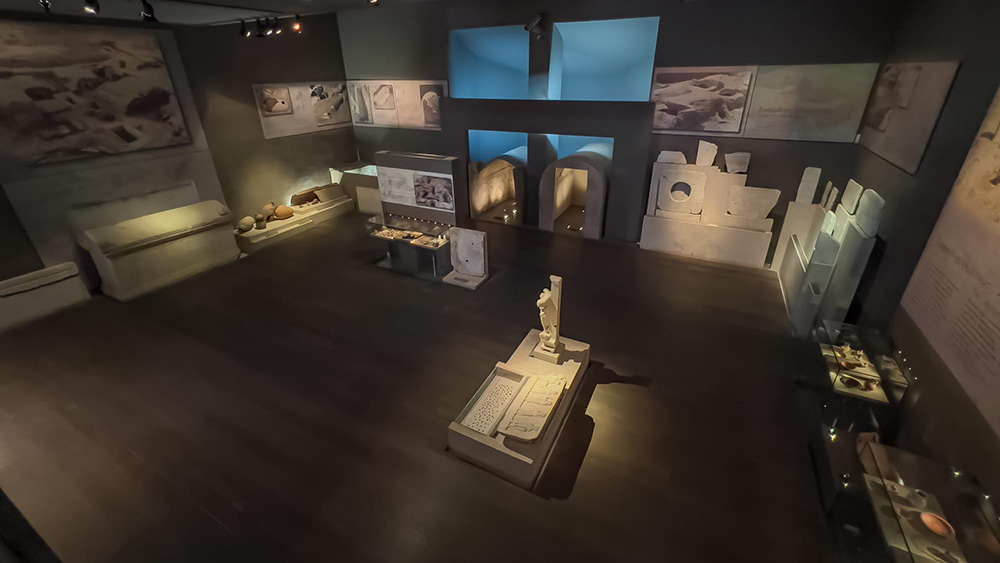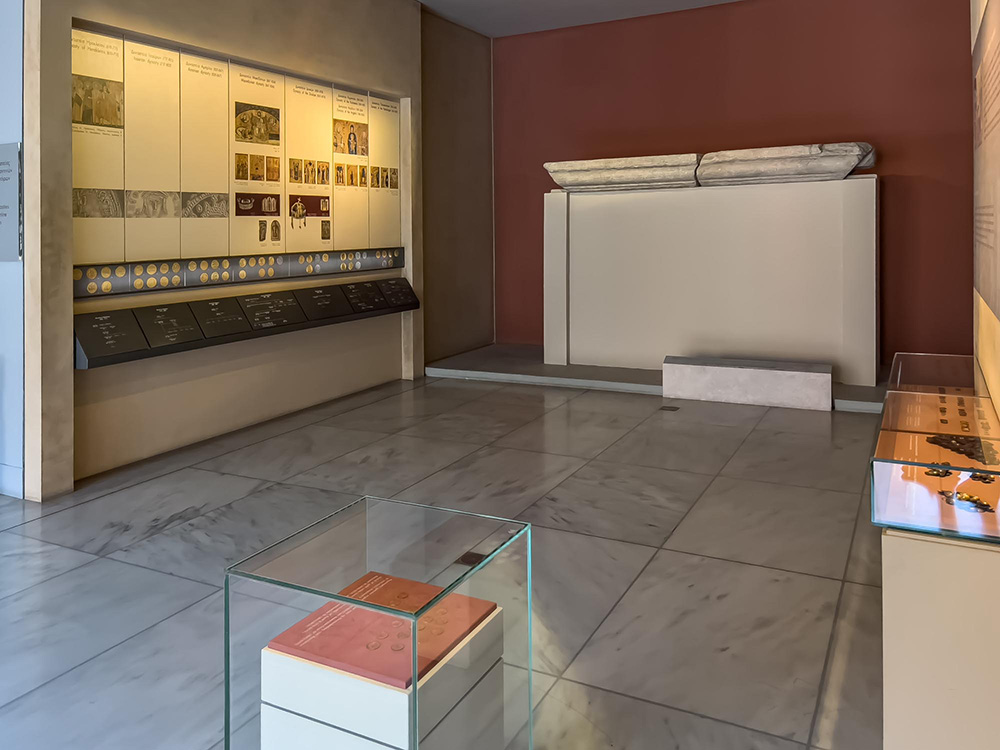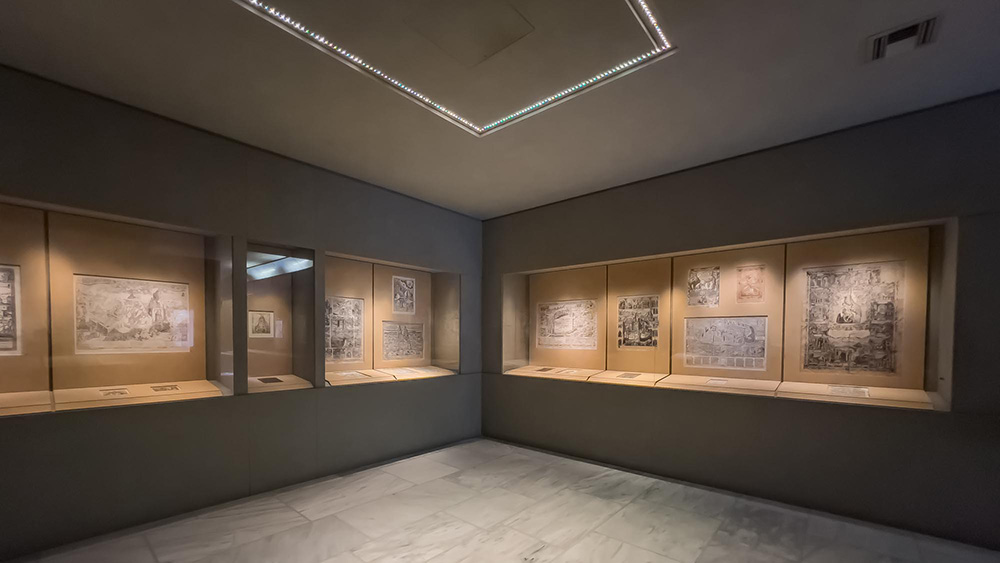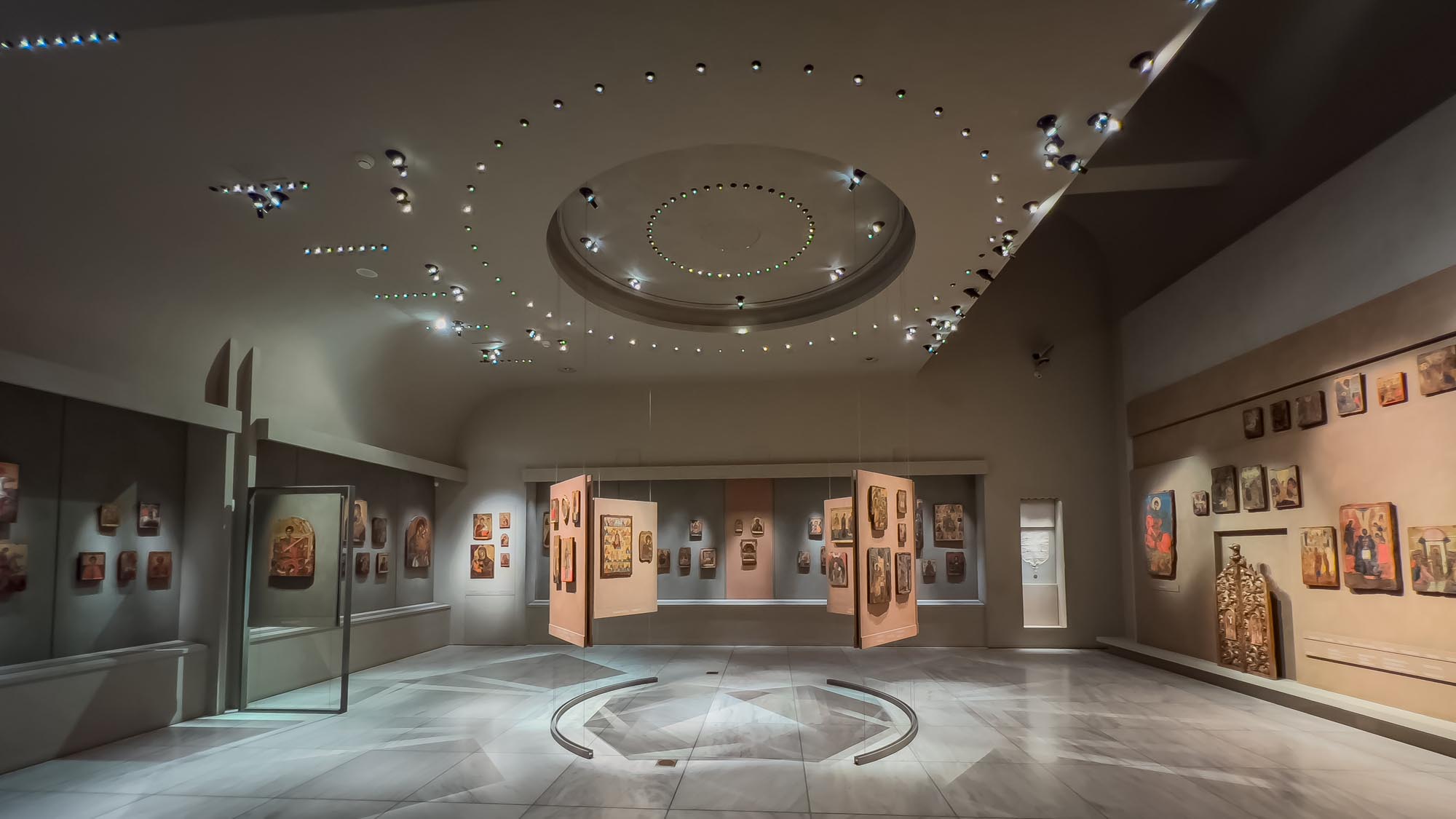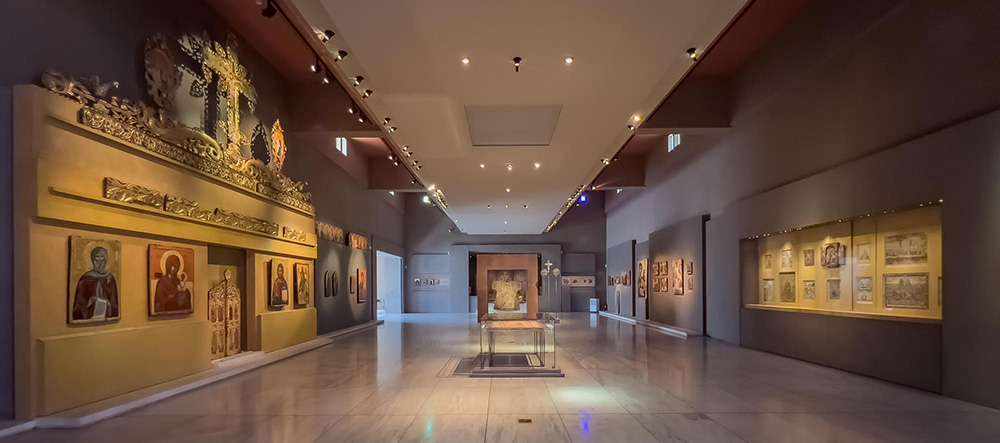Gallery 1
The Early Christian or Protobyzantine period (4th-7th c.) begins with the founding of Constantinople by Constantine the Great in 330 and the transfer there from Rome of the capital of the Roman Empire. This eastward shift of the Empire’s centre of gravity, as also the adoption of Christianity as the official state religion, changed the face of the Empire, emphasizing its religious dimension. It was a gradual change, and aspects of the previous period still permeated all sectors of life. The first three rooms of the permanent exhibition treat the Early Christian period, treating the transition from the Late Antiquity to the Protobyzantine period, the process of the establishment of the Christian religion and its triumph, from 4th to 6th c.
Inaugurated in 1997, the first gallery exhibit treats the architecture, decoration, liturgical vessels and artifacts of the early Christian church, represented here by the basic type of the wooden-roofed basilica (a rectangular building divided lengthwise into aisles by colonnades, with an apse at the east end). Of special interest are the opus sectile, the marble revetments and the mosaics from the St Demetrios and Acheiropoietos churches, the seashell intarsia, the glass panels, the wall paintings, the architectural parts (slabs and capitals) and the liturgical vessels.
The decoration of churches was determined to a great extent by the social and economic conditions in the various areas. So it was richer and more elaborate in the large urban centres, and poorer and simpler in the outlying areas. In the provinces, churches were usually floored with mosaic and the walls were decorated with frescoes; while the more luxurious churches tended to have marble floors and mosaics and marble revetments on the walls.



